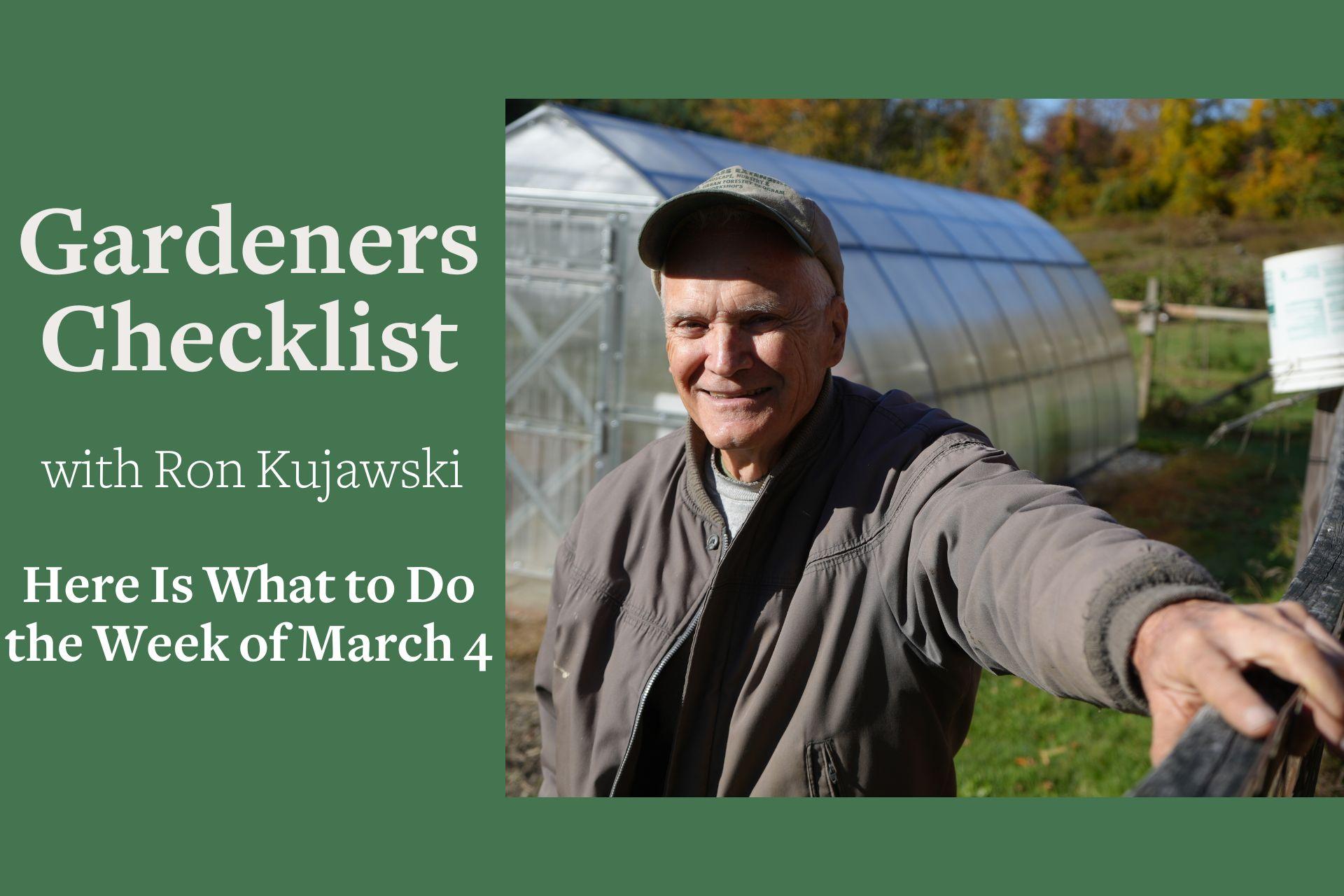You are here
Gardeners Checklist: Here is What To Do on the Week of March 4
Gardeners Checklist: Here is What To Do on the Week of March 4
By Ron Kujawski
• Buy extra seed to use for succession planting and for summer planting of fall harvested crops. Succession planting is the planting of a crop in space made available with the harvest of an early planted crop. For example, when my first crop of radish is pulled up, I’ll plant that space to another radish crop or some leaf lettuce. Harvest of that crop will be followed by a sowing of bush beans which in turn will be succeeded by a fall crop of spinach.
• Stretch the harvest season for peas by buying varieties with different maturing dates. For example, ‘Mr. Big’ matures in 58 days, ‘Little Marvel’ in 63 days, and ‘Green Arrow’ in 70 days. Use this same strategy for other vegetable crops such as cabbage and sweet corn.
• Buy some row covers and wire or bamboo hoops to make grow tunnels. Once soil has thawed, insert the wire or bamboo hoops into the ground and attach a row cover to the hoops to create a grow tunnel. Grow tunnels allow an early start on many crops.
• Get a kitty litter tray or other wide, shallow tray to use when watering newly seeded pots or flats of flowers and vegetables started indoors. Place pots or flats in the tray and add water to the tray. Allow the pots about 15 minutes to take up the water. Watering in this way prevents washing out of shallowly sown seeds. It also allows me to move on to other sowing chores instead of standing around watering each newly seeded container. I water pots and flats of seedlings in this way too.
• Start some seeds of hot peppers (cayenne, habanero, or jalapeno) to grow as houseplants. Their shiny, dark green leaves make for attractive foliage plants. Keep them in a sunny window and they’ll reward you with hot peppers as well.
Nestled in a corner of our basement is an area I refer to as my garden room because it’s where I start seeds, and grow vegetable and flower transplants under banks of fluorescent lights. It’s also where I’ve been storing an assortment of recycled yogurt cups, clementine boxes, various plastic food trays, and one-gallon milk cartons. My wife says the appearance of the room qualifies me as a candidate for that TV reality show, Hoarders. Not so! All of these items will be used for various gardening purposes this year. Take the plastic milk cartons, for example, I fill these with water and use them to hold down the edges of row covers placed over early-planted vegetable crops. Some cartons will be painted black or green, filled with water, and placed in my cold frame as heat reservoirs to protect seedlings on chilly nights. When I remove the bottoms from other cartons, they’ll make great cloches for transplants set out in the garden.
Oops! There’s the doorbell. Hmm, looks like a camera crew from the A&E network. I wonder what they want???
Ron Kujawski began gardening at an early age on his family's onion farm in upstate New York. Although now retired, he spent most of his career teaching at the UMass Extension Service. He serves on Berkshire Botanical Garden’s Horticulture Advisory Committee. His book, Week-by-Week Vegetable Gardener’s Handbook, is available here.
Help Our Garden Grow!
Your donation helps us to educate and inspire visitors of all ages on the art and science of gardening and the preservation of our environment.
All donations are 100 percent tax deductible.



